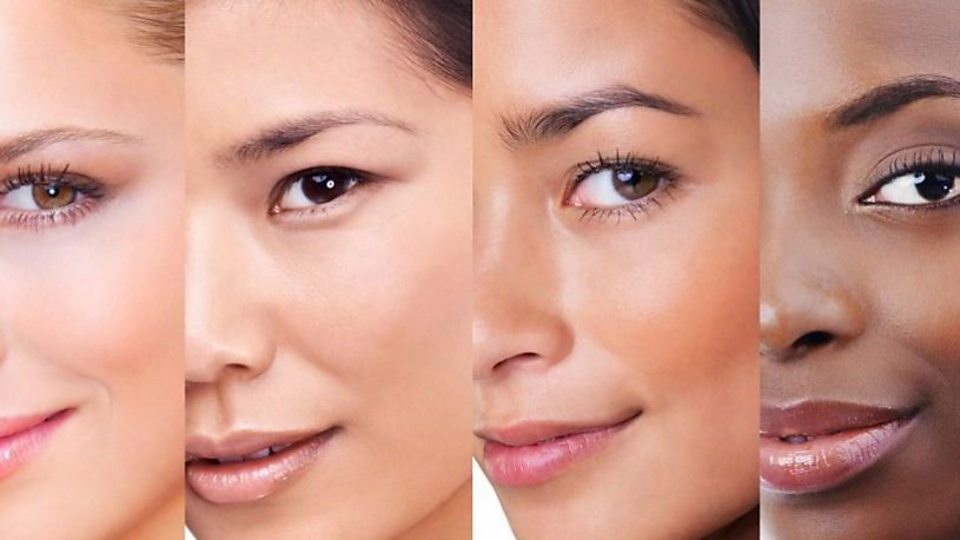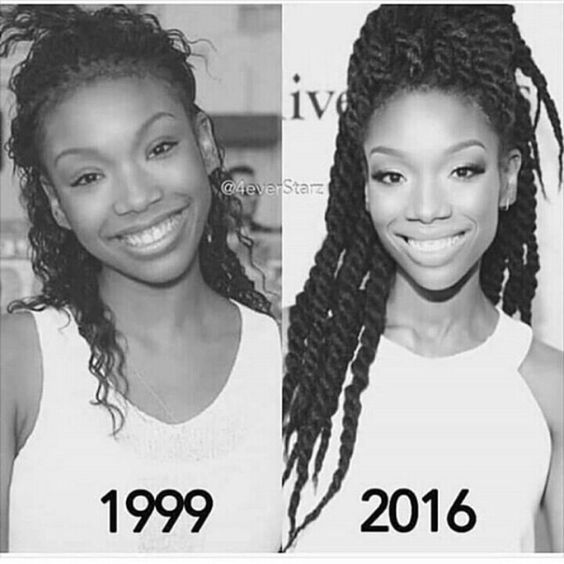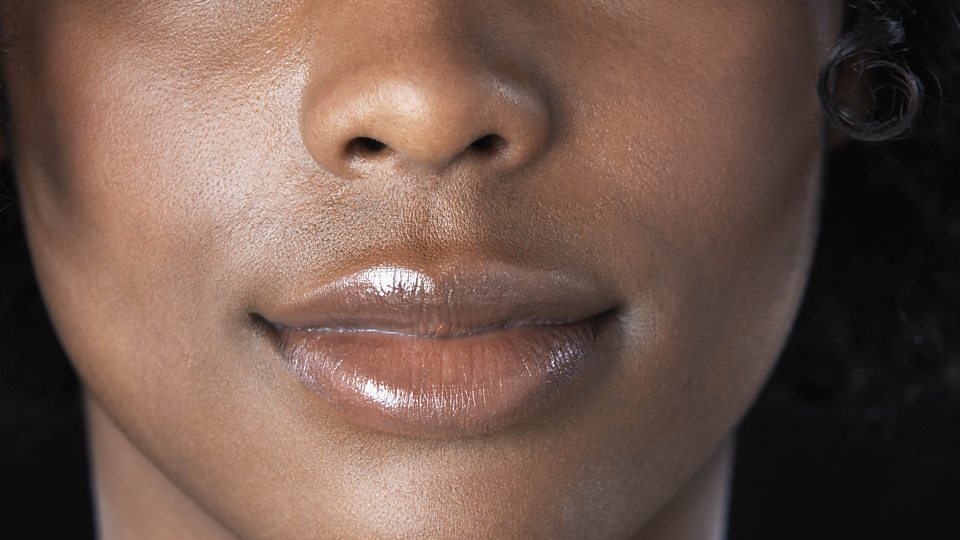Black Don't Crack And Brown Don't: A Celebration Of Timeless Beauty
Ever wondered why the phrase "Black don't crack and brown don't" has become such a cultural phenomenon? It's not just a catchy saying—it's a celebration of resilience, beauty, and the unique qualities that come with melanin-rich skin. In a world where beauty standards are constantly evolving, this phrase reminds us that darker skin tones have a natural ability to age gracefully. But there's so much more to it than just skin—it's about confidence, pride, and embracing who you are.
This isn't just some random internet trend; it's a movement that speaks to the heart of many people around the globe. From social media hashtags to real-life conversations, the phrase has sparked discussions about self-love, representation, and the importance of seeing yourself represented in positive ways. If you've ever felt like your beauty was overlooked or undervalued, this article is here to change that narrative.
So, why does "Black don't crack and brown don't" matter so much today? Well, it's not just about skin—it's about identity, empowerment, and breaking free from outdated beauty norms. Let's dive deeper into what makes this phrase so powerful and how it can inspire you to embrace your natural beauty.
Read also:Is Eel Healthy Discover The Surprising Benefits Of This Underappreciated Seafood
Understanding the Roots of "Black Don't Crack"
Let's rewind a bit and explore where this iconic phrase originated. While it might seem like a modern invention, the idea of "Black don't crack" has been around for decades. It started as a way to highlight the natural anti-aging properties of darker skin tones, but over time, it evolved into a symbol of pride and empowerment. People began using it to celebrate the unique qualities that come with being Black or Brown.
But it's not all about vanity. The phrase also acknowledges the struggles that people with darker skin tones face in a world dominated by Eurocentric beauty standards. It's a reminder that beauty isn't one-size-fits-all and that every skin tone deserves to be celebrated. And let's be real—it's not just about the skin. It's about the confidence that comes with knowing you're beautiful just the way you are.
Why Does Skin Tone Matter in Beauty?
When we talk about "Black don't crack and brown don't," we're really talking about the science behind skin aging. Research shows that melanin, the pigment that gives skin its color, has natural protective properties against sun damage and aging. This means that people with darker skin tones often experience fewer wrinkles and age spots compared to those with lighter skin. But here's the kicker—it's not just about how you look; it's about how you feel.
Feeling confident in your own skin is one of the most powerful things you can do for yourself. And when you see representation of people who look like you in media, it reinforces that confidence. That's why this phrase resonates so deeply with so many people—it's not just about aging gracefully; it's about embracing your identity and celebrating your uniqueness.
The Science Behind Melanin and Aging
Okay, let's get into the nitty-gritty. What exactly makes melanin so special when it comes to aging? Well, melanin acts as a natural sunscreen, protecting the skin from harmful UV rays. This means that people with darker skin tones are less likely to experience premature aging caused by sun exposure. But that's not all—melanin also helps maintain skin elasticity, which keeps the skin looking youthful and vibrant for longer.
Now, here's the thing—while melanin provides some protection, it doesn't mean you can skip sunscreen altogether. UV damage can still occur, and it's important to take care of your skin regardless of your skin tone. But knowing that you have an extra layer of protection can be a confidence booster in itself. And let's be honest—who doesn't want to feel good about their skin?
Read also:What Do They Call Mardi Gras In Austria A Carnival Celebration With A Twist
Debunking Common Myths About Melanin
- Myth: People with darker skin don't need sunscreen.
- Fact: While melanin provides some protection, everyone should wear sunscreen to prevent UV damage.
- Myth: Darker skin tones don't age.
- Fact: All skin tones age, but melanin-rich skin tends to show fewer signs of aging.
- Myth: Melanin only affects skin color.
- Fact: Melanin also plays a role in hair and eye color, and it has protective properties beyond just skin.
These myths can be misleading and harmful, which is why it's important to educate yourself and others about the science behind melanin. By understanding the truth, we can better appreciate the unique qualities that come with darker skin tones.
Black and Brown Beauty in the Media
Representation matters, and that's why seeing Black and Brown beauty in the media is so important. For too long, mainstream media has focused on Eurocentric beauty standards, leaving people with darker skin tones feeling invisible or undervalued. But things are starting to change. More and more brands are featuring diverse models, and social media platforms are amplifying voices that celebrate Black and Brown beauty.
This shift isn't just about aesthetics—it's about empowerment. When you see people who look like you being celebrated for their natural beauty, it reinforces the idea that you don't need to conform to outdated beauty standards. And that's a powerful message that can change lives.
Breaking Down Beauty Standards
Let's talk about beauty standards for a minute. For years, the beauty industry has promoted a narrow definition of beauty that often excludes people with darker skin tones. But as the world becomes more diverse, these standards are starting to evolve. Brands are beginning to recognize the importance of inclusivity and are making efforts to represent all skin tones in their campaigns.
But there's still work to be done. While progress has been made, there's still a long way to go in terms of true representation and equality in the beauty industry. That's why movements like "Black don't crack and brown don't" are so important—they challenge the status quo and encourage people to embrace their natural beauty.
Celebrating Black and Brown Culture
Beauty isn't just about skin—it's about culture, heritage, and identity. The phrase "Black don't crack and brown don't" is a celebration of the rich cultural heritage that comes with being Black or Brown. From music and art to fashion and cuisine, there's so much to appreciate and celebrate about Black and Brown culture.
This phrase is a reminder that our beauty isn't just skin-deep—it's rooted in the traditions, values, and experiences that make us who we are. By celebrating our culture, we're not only embracing our own identity but also promoting understanding and acceptance among others.
The Intersection of Beauty and Culture
Beauty and culture are deeply intertwined, and that's especially true for Black and Brown communities. From traditional hairstyles to vibrant fashion, there are countless ways that culture influences beauty. And when we celebrate these aspects of our culture, we're also celebrating our identity and heritage.
For example, natural hair has become a symbol of empowerment for many Black women. By embracing their natural curls, they're rejecting outdated beauty standards and celebrating their unique beauty. It's a powerful reminder that beauty comes in all forms and that our cultural expressions are just as important as our physical appearance.
Empowering the Next Generation
One of the most important aspects of "Black don't crack and brown don't" is its ability to empower the next generation. When young people see positive representations of Black and Brown beauty, they're more likely to grow up with a strong sense of self-worth and confidence. And that's something we should all be striving for.
By promoting messages of self-love and acceptance, we can create a world where everyone feels valued and appreciated for who they are. And that's a world worth fighting for.
Teaching Kids to Love Themselves
It's never too early to start teaching kids about self-love and acceptance. By introducing them to positive messages about Black and Brown beauty, we can help them develop a strong sense of identity and confidence from a young age. Whether it's through books, movies, or real-life role models, there are countless ways to inspire the next generation to embrace their natural beauty.
And let's not forget the power of community. When kids see people who look like them being celebrated and valued, it reinforces the idea that they are beautiful just the way they are. That's a lesson that will stay with them for life.
Challenging Stereotypes and Misconceptions
Stereotypes and misconceptions about Black and Brown beauty have been around for far too long. From the idea that darker skin tones are less attractive to the belief that melanin-rich skin doesn't need care, these stereotypes can be harmful and damaging. But movements like "Black don't crack and brown don't" are helping to challenge these outdated beliefs and promote a more inclusive and accepting view of beauty.
By celebrating the unique qualities that come with darker skin tones, we're not only challenging stereotypes but also promoting understanding and acceptance. And that's something we can all get behind.
Why Representation Matters
Representation isn't just about seeing people who look like you in the media—it's about feeling seen and valued in society. When Black and Brown beauty is represented in positive ways, it sends a powerful message that everyone deserves to be celebrated for who they are. And that's a message that can change lives.
So, the next time you see a hashtag or a social media post celebrating "Black don't crack and brown don't," take a moment to appreciate the power of that message. It's not just a phrase—it's a movement that's changing the world, one post at a time.
Conclusion: Embrace Your Beauty
As we wrap up this article, let's take a moment to reflect on what we've learned. "Black don't crack and brown don't" isn't just a catchy phrase—it's a celebration of resilience, beauty, and identity. It reminds us that our worth isn't defined by outdated beauty standards but by the unique qualities that make us who we are.
So, what can you do to embrace your natural beauty? Start by celebrating your identity, educating yourself about the science behind melanin, and supporting movements that promote inclusivity and acceptance. And don't forget to share this article with your friends and family to spread the message of self-love and empowerment.
Remember, beauty comes in all forms, and the most important thing is to love yourself for who you are. So, go out there and shine—you've got this!
Table of Contents
- Understanding the Roots of "Black Don't Crack"
- The Science Behind Melanin and Aging
- Black and Brown Beauty in the Media
- Celebrating Black and Brown Culture
- Empowering the Next Generation
- Challenging Stereotypes and Misconceptions
- Conclusion: Embrace Your Beauty
Alec Donnelly: The Rising Star You Need To Know About
Trade Winds Furniture: Your Ultimate Guide To Stylish And Durable Home Decor
Unveiling Andrew Leister: The Untold Story Of A Rising Star

Black don't crack Meaning Is it true? BBC Ideas

black dont crack Ma Coiffeuse Afro

Black don't crack Meaning Is it true? BBC Ideas